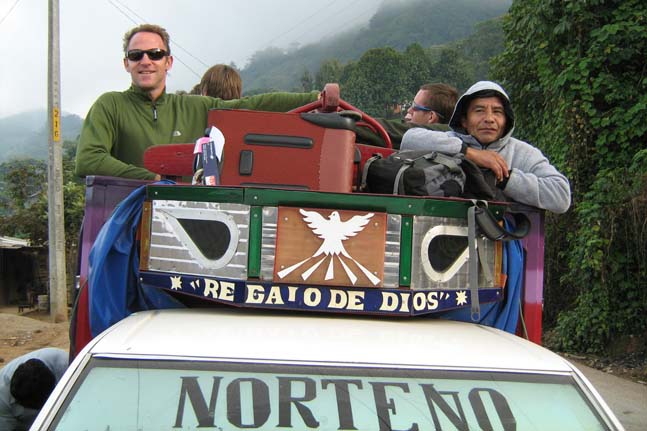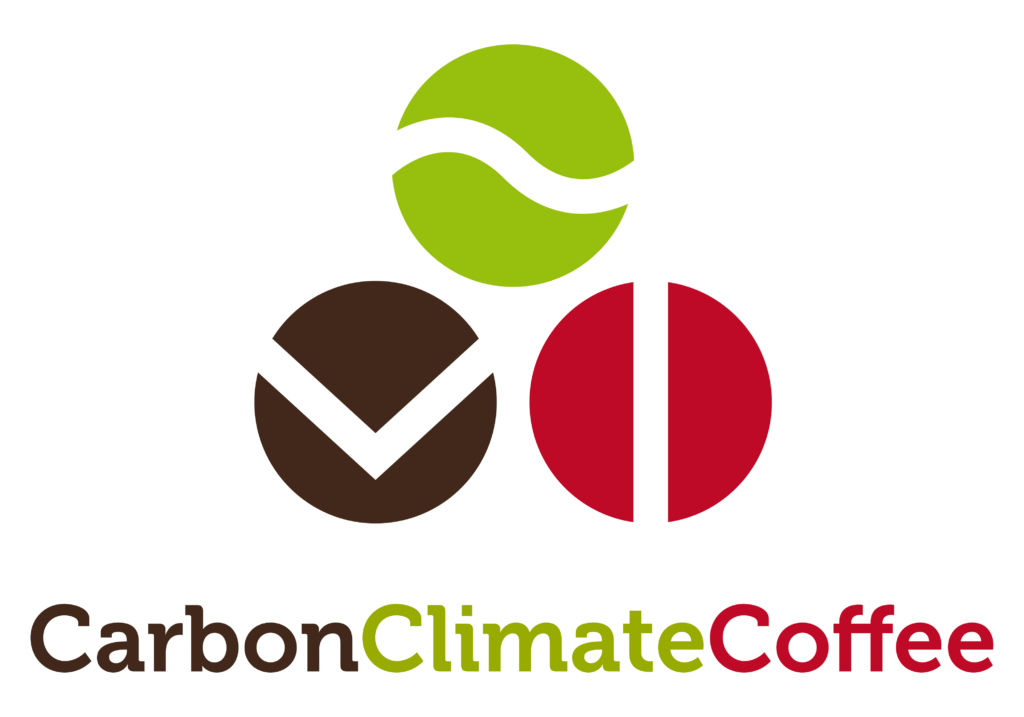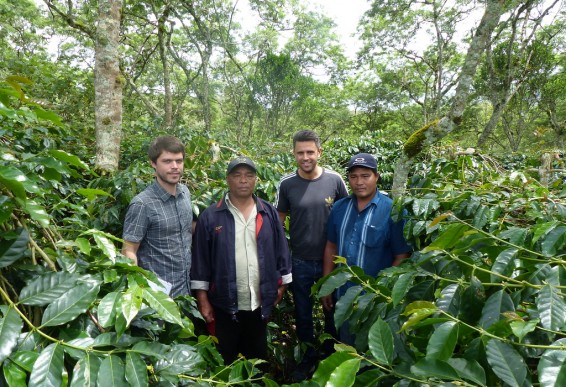
Unstable Weather — Threatens Gayonese Coffee Farmers in Sumatra
Special Report by Florent Gout, CoopCoffees Buyer for Africa and Indonesia
 Until just recently, the Gayonese coffee farmers in Sumatra have been spared the dramatic impacts of climate change. In contrast to the climate-related havoc being wrought upon so many coffee grower regions across Latin America and Africa in recent years, the Gayonese coffee farmers of northern Sumatra have been considered “fortunate” to be spared this particular challenge. However the Sumatran farmers’ luck suddenly flipped this harvest, with their coffee seriously damaged due to the lack of rainfall from January to September of 2016. This prolonged drought provoked higher local temperatures and stunted the maturation of the coffee cherries – resulting in many “empty” or immature cherries on the tree. And since misery loves company… when the rains finally did arrive in late September, this coincided precisely with the coffee drying season in the highlands, when farmers need consecutive sunny days to guarantee stable coffee quality.
Until just recently, the Gayonese coffee farmers in Sumatra have been spared the dramatic impacts of climate change. In contrast to the climate-related havoc being wrought upon so many coffee grower regions across Latin America and Africa in recent years, the Gayonese coffee farmers of northern Sumatra have been considered “fortunate” to be spared this particular challenge. However the Sumatran farmers’ luck suddenly flipped this harvest, with their coffee seriously damaged due to the lack of rainfall from January to September of 2016. This prolonged drought provoked higher local temperatures and stunted the maturation of the coffee cherries – resulting in many “empty” or immature cherries on the tree. And since misery loves company… when the rains finally did arrive in late September, this coincided precisely with the coffee drying season in the highlands, when farmers need consecutive sunny days to guarantee stable coffee quality.
Climate volatility is clearly making the livelihoods of Sumatran coffee farmers more unpredictable than ever.
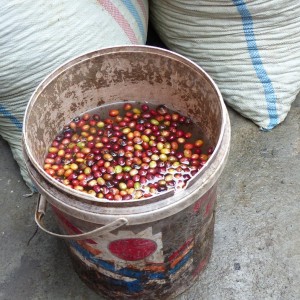 What I witnessed during my recent visit to the Permata Gayo Cooperative and their primary community of Tanjung Sari (1100m above sea level) concerns me deeply. On average, farmers discoverd at least 45% of the harvested coffee cherries contained no coffee beans! To put this into economic terms, the lower yields caused by these “empty cherries” resulted in earnings of $2,000 IDR per kg, when the local price for regular yields of “normal” cherries were $10,000 IDR. Because of these extremely low earnings, it is simply not worth producers’ time to collect and delivery cherry to the washing stations. For that reason, Permata Gayo Cooperative has advised the farmers in this region not to deliver their coffee this harvest. This situation is very similar in all farms located lower than 1200m above sea level in the sub-districts of Aceh Tengah and Bener Meriah.
What I witnessed during my recent visit to the Permata Gayo Cooperative and their primary community of Tanjung Sari (1100m above sea level) concerns me deeply. On average, farmers discoverd at least 45% of the harvested coffee cherries contained no coffee beans! To put this into economic terms, the lower yields caused by these “empty cherries” resulted in earnings of $2,000 IDR per kg, when the local price for regular yields of “normal” cherries were $10,000 IDR. Because of these extremely low earnings, it is simply not worth producers’ time to collect and delivery cherry to the washing stations. For that reason, Permata Gayo Cooperative has advised the farmers in this region not to deliver their coffee this harvest. This situation is very similar in all farms located lower than 1200m above sea level in the sub-districts of Aceh Tengah and Bener Meriah.
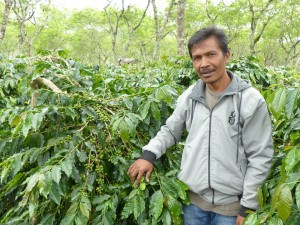 Only 10km away, the village of Ujung Gele does not experience the same dramatic problems. With most of the farms in this region located at 1300m above sea level and closer to the Gereudong volcano, temperatures have remained a little cooler and their rich, volcanic soils maintain more resilient coffee trees. That said, weather conditions delayed the harvest in this region by about a month, starting in the end of October. And farmers do not expect a harvest peak in December, as is usually the case. The crop will perform slower and with lower quality expectations from now until January.
Only 10km away, the village of Ujung Gele does not experience the same dramatic problems. With most of the farms in this region located at 1300m above sea level and closer to the Gereudong volcano, temperatures have remained a little cooler and their rich, volcanic soils maintain more resilient coffee trees. That said, weather conditions delayed the harvest in this region by about a month, starting in the end of October. And farmers do not expect a harvest peak in December, as is usually the case. The crop will perform slower and with lower quality expectations from now until January.
Fortunately for Permata Gayo Cooperative most members’ farms are located in regions above 1200 meters. However farmers are concerned that if these trends continue, higher elevations will be also be affected in future harvests. Due to Sumatra’s close proximity to the equator and with a rainy season usually beginning late September, the Gayonese highlands generally produce a second harvest from March to June. Farmers are hoping that this “second harvest” will be larger than usual, in order to compensate for these issues during the current, primary crop. And, in CoopCoffees, so do we!
The lands of Gayo were not actively cultivated from 1997 to 2004 due to local conflict. Since a Peace Agreement was achieved in 2005 and coffee farmers started working their lands again, farmers have not invested in soil fertility, planting new trees, or developing more shade cover. But today with climate change increasingly affecting higher and higher altitudes in the coffee growing regions, farming communities need to make these investments to assure the future of Gayo coffee.
November 10, 2106




